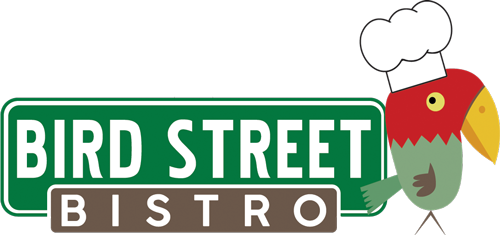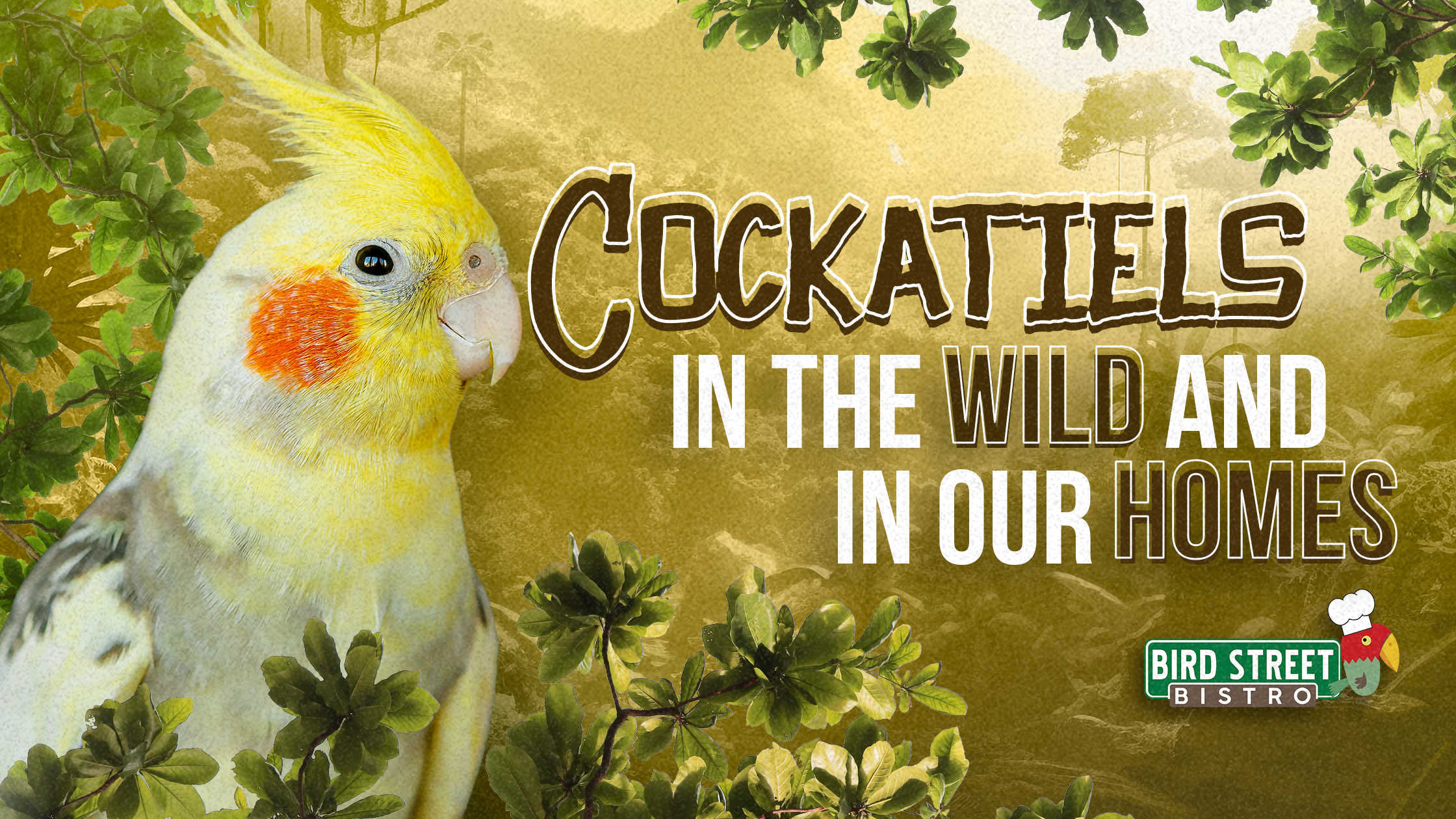Cockatiels - In the Wild and in Our Homes
Intelligent, beautiful, and often downright silly, the cockatiel has been charming its way into people’s families for many years. For many parrot lovers, their first experience with a parrot was with a cockatiel. This is due to their popularity as pets in many parts of the world. But why are they so popular and what is it like to share a home with one on a day-to-day basis?
The Wild Cockatiel

Cockatiels, scientific name Nymphicus hollandicus, are natively from Australia and can be found throughout the mainland but mainly in arid to semi-arid locations. They are mostly grey with distinctive orange patches covering their ears, commonly referred to as their “cheek patches.” Males found in the wild have yellow feathers on their heads while females tend to have grey with more muted orange patches.
In the wild, they mainly feed and like to forage on the ground. They can de-shell seed pretty quickly and a study found that they seem to enjoy sorghum which made up about 60% of their crop contents but they also ate sunflower seeds along with 29 other seed types! They also love to eat things like berries and even insects if they can get a hold of them, so naturally, they can also be seen as pests by some local farmers. Another study found that cockatiels can use their sense of taste to detect and possibly avoid foods that contain toxic substances in the wild.
Cockatiels nest in tree hollows near the water so they have plenty to drink. They lay on average 4 eggs but have been known to lay up to 7. They tend to be monogamous, meaning they form a paid bond and mate with the same bird throughout their lives. The female will sit on the eggs for 17 to 23 days and the chicks are usually ready to leave the nest at about 5 weeks. During the nesting time, chicks learn from their parents and are provided with enough food to sustain them.
Cockatiel Social Life

Pet cockatiels often tend to be kept as single bids or in pairs. They are very social animals requiring an adequate amount of social interaction and enrichment to be healthy and happy. In the wild, they move and feed together in groups and engage in daily activities with one another. Therefore, birds must get plenty of time outside of their cage and among people in a central location in the home to keep them from becoming lonely and bored. Especially if that bird is housed by themselves without the company of another. Of course, this is generally a good practice with all parrots excluding those that have special needs.
Cockatiels vocalize for many reasons, including to help spread emotional states and related behaviors to other birds in the flock. This is known as an “emotional contagion” a form of social contagion. The cockatiel emotional contagion is believed to be strongest among close family and flock members meaning it can have a greater effect and a deeper meaning to those birds. A distress call can let others know that there might be a danger and vocalizations used as white noise might indicate that a bird is content and it is safe to maintain the status quo.
Cockatiels seem to have a real affinity for music. You may have seen videos of them whistling an entire jingle or theme song. A study done on cockatiel singing and synchrony stated that “cockatiels have a remarkable ability for flexible vocal control similar to what is seen in human singing.” They can adjust their whistling or singing to match that of the music. In the study, food as a reinforcement was not necessary for the birds to sing together. This likely means that music and whistling are a part of social bonding.
Cockatiel Enrichment

Because cockatiels evolved to be so active and social, they have a lot of requirements when it comes to enrichment. Whether you have one or several, they always need adequate stimulation and enrichment. Some forms of enrichment an owner can provide are toys, social interaction, training (which can be an excellent form of bonding between owners and birds), and foraging opportunities.
Toys can be purchased from the store but can also be made out of safe materials and individual parts. Because mass-produced toys tend to look similar and follow a pretty standard template, some birds may get bored of the same kinds therefore rotating toys and finding new types can be helpful. Because parrots tend to be neophobic, meaning they can be fearful of new objects or situations, slowly introducing a new toy through a gradual introduction can help ease that fear. Wood is always a good bet but toys meant to be shredded and destroyed are also enriching for birds. Many birds find a great deal of enjoyment from foraging toys where treats are placed into the toy and have to be picked at and manipulated to retrieve them.
Another important aspect of enrichment for cockatiels, as discussed previously, is social interaction. Steps should be taken to make sure the cockatiels have the appropriate level of social enrichment. It isn’t always guaranteed that two birds will get along even if they are the same species. So, it isn’t as simple as looking to get another or relying on cagemates to provide those needs to one another. Training can be an amazing way to bond with a bird whether it is single or housed with others. By teaching a bird to do things like step up and flight recall, that bird is not only sharing bonding time with the human but is also learning and developing which is very enriching. Using positive reinforcement and staying consistent can help provide for the bird and also create desirable behaviors making the humans in the house happier as well.
Cockatiel Health

First and foremost, an avian veterinarian should always be the number one source for information on parrot health. However, there are some general guidelines a person can follow to help ensure their bird lives a long, healthy life. These are meant as general tips and should be discussed with your vet for further clarification.
Proper Nutrition: Although cockatiels eat a lot of seeds in the wild, they are also much more active in that environment. In a domestic setting, careful consideration should be taken to ensure they are getting a healthy, varied diet to suit the more cushiony, sedentary lifestyle in our homes. Seeds can still be an important part of a bird’s diet, but they should also be provided with healthy, fresh food and a high-quality pellet. Treats can be offered as a training tool and foraging activity as well.
If you're looking for ideas on how to provide an enriching new food to your parrot's diet, take a look at our line of parrot food! We recommend our sampler pack to introduce your feathered friend to our delicious bistro.
Emotional Health: Cockatiels are very intelligent and social. A bored, lonely parrot is likely to display negative behaviors and have a much lower quality of life. Taking into consideration their social needs and also working to make sure they are provided with enough enrichment will contribute to a healthier bird.
Observing your parrot daily and keeping track of their habits can make a huge impact on their health. By observing your bird and getting to know it, you can identify when something seems off. Reporting changes in your bird's habits and behavior to a vet can help catch health issues that might arise.
References:
Jones, D. “Feeding ecology of the cockatiel, nymphicus-hollandicus, in a grain-growing area.” Wildlife Research, vol. 14, no. 1, 1987, p. 105, https://doi.org/10.1071/wr9870105.
Matson, Kevin D, et al. “Cockatiels (Nymphicus Hollandicus) reject very low levels of plant secondary compounds.” Applied Animal Behaviour Science, vol. 85, no. 1–2, 2004, pp. 141–156, https://doi.org/10.1016/j.applanim.2003.09.008.
Newmyer, Brandon. “Nymphicus Hollandicus (Cockatiel).” Animal Diversity Web, animaldiversity.org/accounts/Nymphicus_hollandicus. Accessed 11 Jan. 2024.
Liévin-Bazin, Agatha, et al. “Emotional responses to conspecific distress calls are modulated by affiliation in Cockatiels (nymphicus hollandicus).” PLOS ONE, vol. 13, no. 10, 2018, https://doi.org/10.1371/journal.pone.0205314.
- Choosing a selection results in a full page refresh.
- Press the space key then arrow keys to make a selection.


